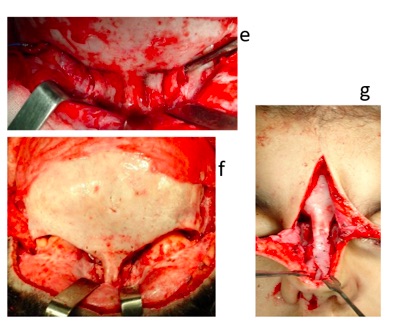What the time has taught about Hyperteleorbitism
DOI:
https://doi.org/10.46900/apn.v4i2(May-August).124Keywords:
Hyperteleorbitism, orbital hypertelorism, frontonasal dysplasia, frontoethmoidal meningoencephalocele, rare facial cleftAbstract
Introduction: Hypertelorbitism is a clinical feature that may be present in various types of pathologies and degrees of manifestation. Observing the evolution of techniques over time and understanding the specific characteristics of each case demonstrates the difficulty of establishing treatment protocols.
Material and method: Retrospective analysis of over 150 cases of hypertelorbitism operated on over 44 years by the main author. The increased interorbital distance had varied etiologies: dysplasia, meningoencephaloceles, and dysostosis.
Results: Retrusion of the facial middle third throughout growth in congenital hypertelorbitism was present in both dysplasia and dysostosis groups. In cases of early treatment with Tessier's glasses osteotomy there was zygomaticmaxillary atrophy with trapping of tooth germs. The cases of grade III and IV Hyperteleorbitism, with or without meningoencephalocele, which were treated without concomitant skullcap expansion, evolved to endocranial hypertension and required further treatment. Retrospective evaluation of their CT scans revealed craniosynostosis of one or more sutures, associated with predominant dysplasia. Patients treated after adolescence showed more stable late postoperative results.
Discussion: Hypertelorbitism is a clinical feature that may be present in various types of pathologies and in varying degrees of intensity. Many treatment options have been proposed over the past 50 years. The opportunity to watch and experience the evolution of these techniques made it possible to choose the most appropriate treatment for each patient's clinical characteristics.
Conclusion: Due to the variability of manifestation of hypertelorbitism, the massification of procedures and the establishment of treatment protocols are quite limited.
Downloads

Additional Files
Published
How to Cite
Issue
Section
License
Copyright (c) 2022 Vera Lúcia Nocchi Cardim, Alessandra Silva

This work is licensed under a Creative Commons Attribution 4.0 International License.

When publishing in Archives of Pediatric Neurosurgery journal, authors retain the copyright of their article and agree to license their work using a Creative Commons Attribution 4.0 International Public License (CC BY 4.0), thereby accepting the terms and conditions of this license (https://creativecommons.org/licenses/by/4.0/legalcode).
The CC BY 4.0 license terms applies to both readers and the publisher and allows them to: share (copy and redistribute in any medium or format) and adapt (remix, transform, and build upon) the article for any purpose, even commercially, provided that appropriate credit is given to the authors and the journal in which the article was published.
Authors grant Archives of Pediatric Neurosurgery the right to first publish the article and identify itself as the original publisher. Under the terms of the CC BY 4.0 license, authors allow the journal to distribute the article in third party databases, as long as its original authors and citation details are identified.





























